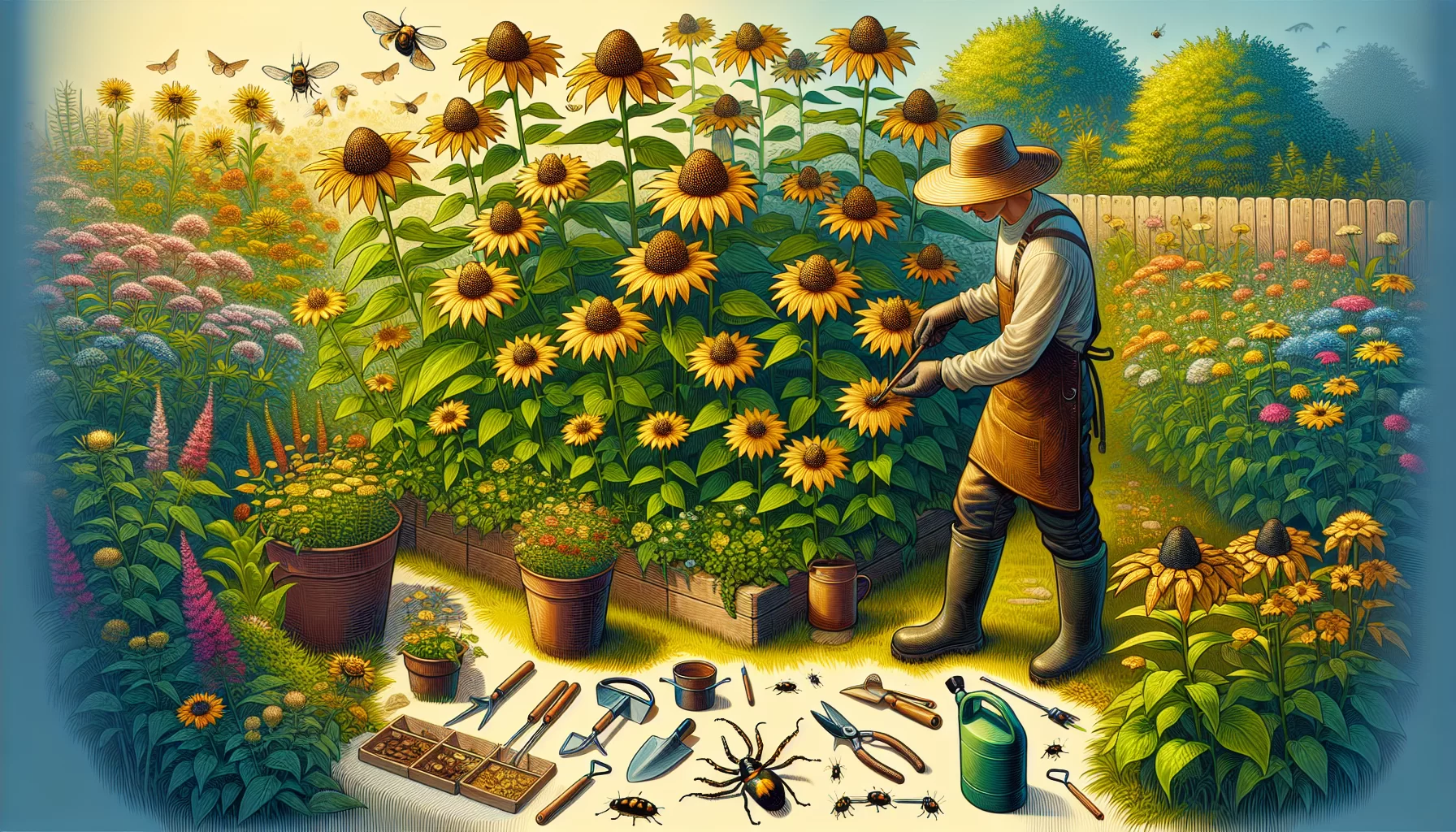Let’s delve into the world of plants, particularly the perennial sunflower Heliopsis – an enchanting inspiration to many amateur and seasoned gardeners alike, owing to its dazzling beauty and resilience. While these sunflowers are gorgeous additions to our backyards, they’re not entirely immune to an occasional uninvited guest, namely a few notable pests. Equipped with the right knowledge and awareness, we can show these small intruders the way out without causing them harm.
Unveiling the perennial sunflower Heliopsis
Often mistaken for the classic sunflower, the perennial sunflower Heliopsis is a standout in any garden with its vibrant yellow petals, hardy stem, and sun-loving disposition. Native to North and South America, these sunflowers are low maintenance, offering an enchanting blend of vibrant colors from summer to fall. They’re known for their resilience and capability to flourish in a variety of soil types.
One significant difference between the Heliopsis and the common sunflower is their lifespan. Heliopses are perennials, meaning they live more than two years, contrasting with annual sunflowers, which complete their lifecycle in just a single year. What’s more, this intriguing plant has a defining trait of not turning its head toward the sun, unlike its sunflower cousins. A perfect combination of practicality and beauty, the perennial sunflower Heliopsis is adored by gardeners just as much as the bees and butterflies it attracts.
Combatting pests without harm
Despite their robust nature, Heliopsis are occasionally targeted by certain pests, namely aphids, spider mites, and snails. While it can be tempting to resort to synthetic pesticides, we cannot forget the potential harm they can cause to beneficial insects and the ecosystem as a whole. Therefore, adopting eco-friendly practices is essential.
Aphids and spider mites can be tackled with the help of an organic, mild soap-water solution. A light spray of this mixture directly onto the plant can make a difference, provided these sprays are done early in the morning or just before sunset to prevent leaf burn. As for snails, a trim around the plant to remove any hiding spots might do the trick, or you can introduce natural predators, such as frogs or birds, to help balance your garden ecosystem.
Alternatively, nurturing a variety of beneficial insects in your garden – like ladybugs and lacewings – or employing the use of neem oil, a powerful natural pesticide, can be very effective. Always remember, the key is to maintain an ecological balance so that pests can naturally be kept at bay.
When it comes to dealing with uninvited guests in your garden, it’s about fostering the harmonious co-existence of all life forms. After all, a garden is much more than just a collection of plants – it’s a small but vital part of our planet’s larger ecosystem
The joy of tending to a garden lies not only in the beautiful outcome of your efforts but also in the wisdom and experiences you gain along the way. The next time you spot a pest on your perennial sunflower Heliopsis, remember you’re not alone. These battles make the garden life adventurous and ultimately, by nurturing nature, we are nurturing ourselves.
Emma Johnson is a passionate and insightful writer specializing in the house and garden niche, bringing over a decade of experience to her readers. At the youthful age of 34, Emma has already established herself as a leading voice in home improvement, landscaping, and interior design. Her journey began with a degree in Landscape Architecture from the University of Georgia, followed by years of hands-on experience working with renowned landscaping firms across the country.
Emma’s writing career took off when she started sharing her unique ideas and eco-friendly gardening tips on her personal blog. Her ability to blend practical advice with aesthetic design quickly garnered attention, leading to her current position as a featured columnist for a prominent online news site.
Dedicated to sustainable living and innovative design, Emma’s articles offer a wealth of knowledge, from DIY home projects to the latest trends in garden technology. Her work not only enlightens homeowners looking to enhance their living spaces but also inspires a deeper appreciation for the environment.
When she’s not writing or experimenting in her own garden, Emma enjoys mentoring young designers and participating in community beautification projects. Her contributions extend beyond her written work, embodying her commitment to making the world a more beautiful and sustainable place, one home at a time.


